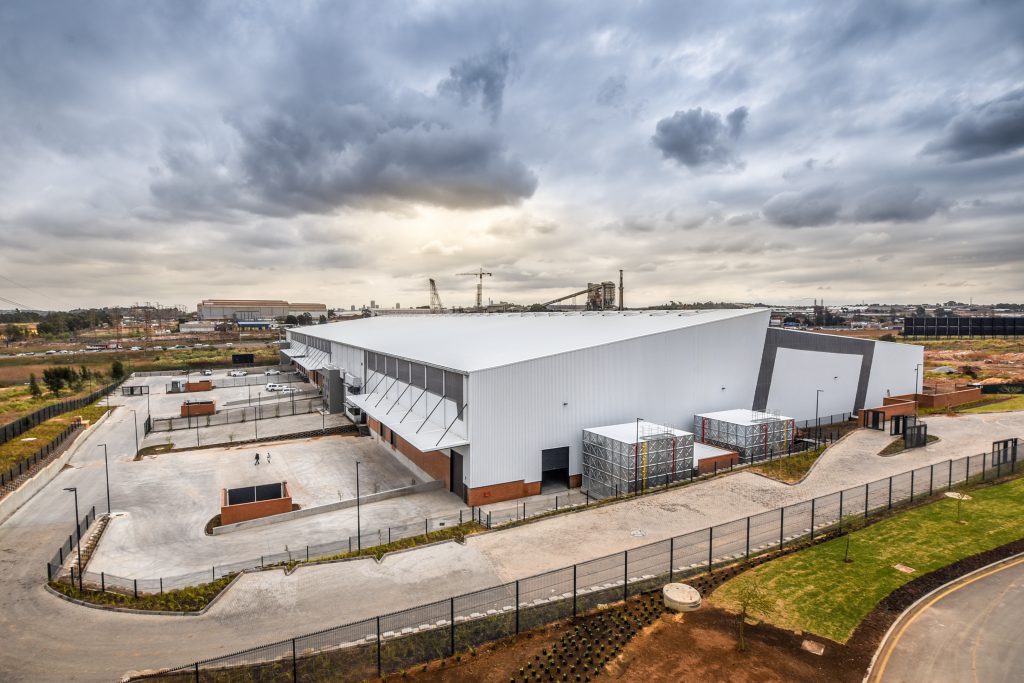Business Day Commercial Property
Bridging The Gap
Logistics and warehousing operations is the sector leader in commercial property, and a key growth area in South Africa, partly because online shopping is creating increased demand for logistics and distribution warehousing infrastructure.
As online sales rise — a trend that is expected to continue gathering momentum — so does the need for urban warehouses to augment the traditional supply chain. And while demand for space might mean higher prices for industrial real estate, it’s still a cheaper deal than retail. “Technology is disrupting all industries,” states the Deloitte Global Powers of Luxury Goods 2019 report. “Its greatest impact on the luxury market is the rise of ecommerce and, ultimately, the need for brands to operate an omnichannel strategy — online and bricks and mortar.”
Fortress REIT Limited, a JSE-listed property development investment company, believes logistics is the main driver for the local economy. The company remains committed to developing its logistics pipeline nationally in its secure well-located logistics parks countrywide in coming years.
Ecommerce has been surging locally with online spend expected to exceed R60-billion in 2020, 36 per cent up on 2018 numbers, according to Barloworld Logistics. While consumers demand more convenience and faster delivery from online retailers, ecommerce sellers need to develop strategies to address demand.
Micro-origin future
One way to do that is through micro-origin fulfilment centres, small-scale warehouse facilities that are gaining popularity internationally. Barloworld Logistics is backing microfulfilment centres as a viable solution for industrial, residential, and business office owners to work together to improve delivery. Typically located in convenient, accessible urban areas, near
the end consumer, they provide businesses with increased flexibility and better opportunities to keep goods closer to customers for speedy delivery.
In New York City, large-scale properties are being transformed into urban logistics centres, thus creating a new sector in real estate. Innovo Property Group CEO Andrew Chung said on Logistics Management’s website that the urban warehouse handles multiple functions, including traditional fulfilment and last-mile deliveries. It can serve as a product showroom and act as an expanded backroom by handling more frequent store replenishment, reducing the amount of inventory stores carry.
Increased demand
Grant Silverman, marketing and leasing director at Abland, says they have noticed increased demand for logistics and distribution warehousing as well as data centres for the storage of critical applications and data. “We are getting many more data centre enquiries from both local and international tenants. There has also been an increase in owner-occupier enquiries, and businesses exploring the ownership option that we offer,” he says. Warehouses built to client specs are particularly popular. “We work very closely with our tenants to understand their requirements, ensuring that the facility will operate at its optimum functionality. Being able to tailor-make each warehouse to the tenant’s specification has proven very successful.”
With research house Frost & Sullivan anticipating global urban supply chain spend to escalate to nearly R83-trillion by 2020, customisation is crucial for forward-thinking companies trying to get a grip on logistics suitable for today’s consumer, whether from the shipping or the receiving perspective. “The supply chain market is becoming more complex in a time-constrained environment as speed of delivery and user experience emerge as critical factors,” notes Frost & Sullivan Visionary Innovation Group senior research analyst Vijay Natarajan. “In fact, instant and same-day delivery solutions are now key service differentiators. Firms must rethink their strategies and devise more agile models that leverage economies of scale and still meet consumer demands.”
Energy-efficient design
Meanwhile, Silverman says designs have become more energy-efficient. “The use of translucent sheeting allows more natural light into the warehouse, while the utilisation of greywater for irrigation and solar-generated power all add to making the facilities more cost-effective to run,” he says.
Abland is looking at launching a new industrial offering in 2020, along the R21 corridor between Pretoria and OR Tambo International Airport. “The new year is looking very positive for the industry. At our S&J Industrial Estate, spanning 210ha in Germiston, we cater for a variety of industrial and commercial uses. It is ideally located along the southeastern corridor of Johannesburg, offering excellent visibility and access to and from the N3, N12, N17, and M2 freeways,” says Silverman. “We have already secured two large users who will be breaking new ground in the first quarter.”
Abland’s Atlantic Hill in Cape Town, located in the Durbanville area on the intersection of the N7 and M12, is set to remain a very strong industrial node. Cold storage, distribution centres and data centres are some of the facilities that have been installed there last year.
Design criteria for facilities near transport nodes have also evolved, with considerations such as green building technologies and energy efficiency being important factors. “Urban design and management are crucial to the success of industrial estates. We are moving away from the typically dirty industrial parks by adding landscaped green areas to soften a generally hard environment,” says Silverman. “We are also integrating cycle lanes and public transport hubs to promote ease of access, and incorporating facilities such as a conference centre and retail options for added convenience.”
Logistics pipeline
In KwaZulu-Natal, Fortress REIT is developing the R4.5-billion Clairwood Logistics Park, which forms part of its extensive national logistics pipeline of approximately one million m2.
Clairwood Logistics Park is 72ha in extent, with capacity for 358 000m2 of warehousing. “It’s the last remaining flat portion of property in the South Durban Basin, other than the old Durban airport,” says Fortress REIT national leasing manager Grant Lewington. “It’s strategically located, within 11km of Durban harbour by road and almost the equivalent distance by rail.”
The facility offers state-of-the-art logistics to facilitate the storage and distribution of goods within A-grade warehousing facilities coupled with road, rail and sea transport, which completes the supply chain. “Its proximity to the port and major arterials makes Clairwood Logistics Park a very attractive option to local and international businesses alike,” says Lewington.
Containerised cargo is a fundamental part of both imports and exports. So Fortress has earmarked a site, dedicated to container handling, at Clairwood Logistics Park. It is in close proximity to a proposed rail siding, which Fortress is in the process of finalising with Transnet. “Rail will contribute to the alleviation of traffic on the roads as well as congestion at the port,” says Lewington. “This initiative supports the government’s commitment to reducing road transportation, ultimately lowering carbon emissions, protecting road networks, and improving road safety.”
The proposed container terminal will facilitate the storage and movement of containers for tenants at Clairwood Logistics Park, as well as surrounding areas. The proposed siding offers a more efficient way of transporting containers to and from the Durban port, as well as inland.
Logistics in South Africa is in a healthy space.






 Sign-up and receive the Business Media MAGS newsletter OR SA Mining newsletter straight to your inbox.
Sign-up and receive the Business Media MAGS newsletter OR SA Mining newsletter straight to your inbox.